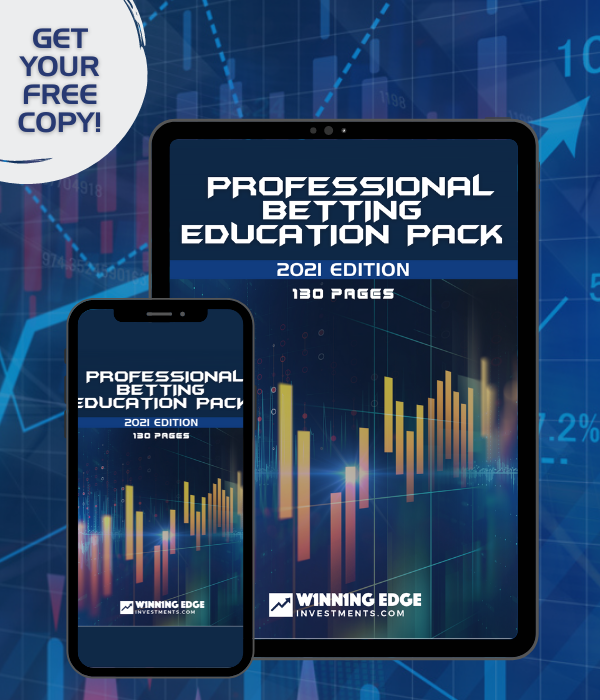
NRL Betting Education
By David Barrett
I am an engineer with a university educated mathematical background, and a very keen sports watcher and bettor. I am what people refer to as a numbers person. The main aspect that I’m drawn to and really enjoy is the mental challenge of building a successful model that proves to be highly profitable. I take a very analytical approach to what I do, and I perform a lot of research to ensure success. In terms of gambling, I have been a positive expected value bettor for three years now utilising an NRL Ratings Line Model (NRL Model). I like to pursue a mathematical edge through statistics, backed up by logic on my bets, as opposed to betting off a gut feel or opinion. Below are my thoughts on a range of betting topics.
There are no rules or guidebooks for what is correct in gambling. I, like all punters, have had to learn a lot of mistakes the hard way. Odds and their respective probability are in my opinion the two most important parts of betting intelligently. If you don’t take them into account, you may as well be playing the pokies.
What are the Odds?
Odds represent the payoff that the bettor is to receive in a successful wager with a bookmaker. Understanding the odds is the most critical part of gambling that most people simply do not pay enough attention to. Below I will give a small run through on the most common odds formats. Two examples of each odds format (favourite and underdog bet) will be given for comparison between the different formats.
Fractional Odds / British Odds
These odds work in a fractional format as the name implies. It states the profit given the stake placed. These odds are a bit outdated in our technological age, but their functionality has proved useful throughout history. This process can be difficult for those that aren’t quick at comparing fractions in their head, but practice and the fact that the numbers are all relatively similar for the denominators makes it not too complicated. An example of British odds is 6/1 which implies for everyone one dollar that you place, if your bet wins then you will profit 6 units and have your 1 unit stake returned. This is a ratio of profit to stake, not return to stake. Hence 6/1 is the equivalent of $7 decimal odds. An example of a hot favourite bet is 2/5 odds that implies for every 5 units staked, if the bet is successful then a profit of 2 units will be made. This is the equivalent of $1.40 decimal odds. For most line bets, a bettor should see a 9/10 line where a profit of 9 units from your 10 units staked will be obtained if you win ($1.90 in decimal odds).
Moneyline Odds / American Odds
This style of odds is the most different to what one would expect in Australia, given they use what initially appears to be an unconventional process to price the odds. There are two main benefits to this odds format. Firstly, it allows for accurate staking between favourites and underdogs, such that if you back a favourite you will profit 1 unit and if you bet an underdog you will stake one unit. This concept can be quite foreign to most uninitiated to the process, but some argue that it is the correct way to go about betting as it allows for a more even return from the bookmaker. Secondly, the other benefit to American odds / Moneyline odds is that it gives a better representation to the odds received on a favourite in a match and how much will have to be staked to win 100 units. This can be taken further again when bettors are pursuing arbitrage opportunities and can quite clearly see that -250 and +600 offers arbitrage (by simply adding the numbers together it is above zero). Simply if the number has a + in front of it, it is the underdog and that implies how much profit you will receive for every 100 units wagered. And if the number has a - in front of it, it is stating how much money you will have to stake to win 100 units. This style has the favourite odds as -250 where you would have to stake 250 units to win 100 units (Decimal Odds $1.40), and the underdog at +600 where your 100 unit stake will return you 600 units profit plus your 100 unit stake (Decimal Odds $7). Typically for line bets, you will see -110 lines at most good bookmakers.
Decimal Odds / European Odds (used in Australia)
Being based in Australia, all of the bookmakers will be using decimal odds, so the learnings from the other formats must be remembered and set aside for reference when it comes to actually placing a wager. The Decimal Odds format is what most readers of this guide will be used to. Whilst it allows for mathematical operations to be performed quite simply in your choice of program, it also can be the most deceiving in terms of value. The underdog example will have decimal odds of $7.00 and the favourite will give odds of $1.40. Simply, one can just take the inverse of the decimal odds when trying to calculate the implied probability (in excel this is performed by =x^-1, where x is the cell with the decimal odds in it).
For example, a team at odds of $2 are a ½ = 50% implied probability
A team at odds of $5 are a 1/5 = 20% implied probability
Implied Probability
Implied probability is the resulting figure that all computer models on the bookmaker side work with, as it provides a better basis for understanding the risk. The vigorish/market percentage dictates that the implied probability of all outcomes of an event should equal to greater than 1.00, as this represents the bookmakers overround. In cases where this does not occur then there is an arbitrage opportunity. Very rarely will individuals use implied probability when placing bets, however it is a very helpful tool to use when assessing value in a model; i.e. if your model has Team A winning 60% of the time and the $1.91 decimal odds stipulate a 52.4% implied probability then your model has an edge of 7.6% in that respective game if you back Team A.
From the previous examples, the underdog has an implied probability of 1/7 = 14.3% and the favourite has an implied probability of 1/1.4 = 71.4%. From a different perspective, the implied probability can be thought of as the required strike rate for a betting model at respective odds to break even. If it is not meeting that strike rate, then it is not sufficient.
The following table provides an example of odds and their implied probability.
The main purpose for the inclusion of this table is to demonstrate that there are small changes in implied probability with larger odds (towards the top of the table), however there are much larger changes in implied probability towards the bottom where the decimal odds change in much smaller increments.
Comparison table
|
Fractional odds British odds |
Moneyline odds American odds |
Decimal odds European odds |
Implied probability |
|
49/1 |
+4900 |
$50.00 |
2% |
|
39/1 |
+3900 |
$40.00 |
2.5% |
|
29/1 |
+2900 |
$30.00 |
3.33% |
|
19/1 |
+1900 |
$20.00 |
5% |
|
9/1 |
+900 |
$10.00 |
10% |
|
4/1 |
+400 |
$5.00 |
20% |
|
3/1 |
+300 |
$4.00 |
25% |
|
2/1 |
+200 |
$3.00 |
33.33% |
|
1/1 |
+100 |
$2.00 |
50% |
|
9/10 |
-110 |
$1.91 |
52.4% |
|
4/5 |
-125 |
$1.80 |
55.55% |
|
7/10 |
-143 |
$1.70 |
58.82% |
|
3/5 |
-167 |
$1.60 |
62.5% |
|
1/2 |
-200 |
$1.50 |
66.66% |
|
2/5 |
-250 |
$1.40 |
71.43% |
|
3/10 |
-333 |
$1.30 |
76.92% |
|
1/5 |
-500 |
$1.20 |
83.33% |
|
1/10 |
-1000 |
$1.10 |
90.9% |
|
1/20 |
-2000 |
$1.05 |
95.24% |
Using horse racing as an example, if there is a horse that is getting backed in from $20, the odds aren’t going to move down to $19.5, rather they will move down the implied probability scale that the bookmaker/trader has, a few percentage points to $17.
Simply put, it is imperative that a bettor obtains the highest odds as possible (unless they are expected to drift on a pari-mutuel / tote). This is to maximise the return and profit on turnover at the end of the day.
As an example, if you have a model that has a 10% strike rate on horses that are typically priced in the $10-$13 range, you will receive a return that is higher by 30% if you can back the horses at an average fixed price of $13 opposed to just placing on the tote when it closes at an average of $10 for each race. This may not seem like a lot, however your effective breakeven percentage goes from 1/10 = 10% to 1/13 = 7.7%, so now your model is much more tolerable to bad runs of luck.
|
|

The chart gives a visual representation of the information in the table. The area under the chart at the 50% implied probability level is equal on both sides mathematically, but yet visually using decimal odds is misleading as differences in price above $2 are negligible. I have heard the quote “the eye lies” in betting, and this is a very true example of it. An example of this, is that for hundreds of years the black swan was presumed not to exist at all, given that no hindsight existed for it, yet in 1697, they were first discovered by the western world. There was no concept of the black swan existing as the only swans being sighted were white, yet the nature of zoology changed entirely that day.
Finding the best odds available will make or break a new model. Typically people like to compare their model against the pinnacle closing line, however for those of you that don’t have access, I recommend considering odds history sites and the betfair hub for its odds data.
Bankroll
A bankroll is an amount of money set aside to use for gambling purposes. One needs to be very disciplined with this amount of money, and as it grows there will be human psychological challenges which will test the nerve of a bettor. I recommend having a separate (much smaller) bank for fun/degenerate bets that you want to place, so that entertainment can still be obtained through wagering whilst still maintaining profitability.
Staking
Upon finding max value in identifying the best odds, a bettor needs to know how much of their respective bankroll they are to wager in order to maximise their return in the future, yet not go overboard should the ticket not win (obtaining the right balance of risk & reward).
Units
What is a unit? Typically, bettors use the simple approach of having a bankroll of 100 units, and then dividing that up into 1% parts, such that $10,000 would equate to $100 units. This is a great approach to betting, however there are alternate ways that do not receive much attention. If your theoretical bankroll is $1,000,000 then you might have a tough time betting $10,000 with a bookmaker at 9am in the Eastern states, as the minimum bet laws stipulate you can only bet to win a maximum of $2,000 per bookmaker. If a horse is at ods of $11, the maximum win bet you can have with each bookie is $200. Even betting with 20 bookies would only get you set for $4,000. As such the limiting part of the equation are the bet limits imposed by the bookmaker. These can be found in the terms and conditions for your respective bookmaker or through contacting their customer service teams. The limits should increase as the time to the event reduces. One alternate way of determining unit sizing that I use, is to find the max bet size for a respective market that I want to bet on, then divide that by twenty (twenty percent representing the maximum discrepancy that my model could logically have with the market before my model could be wrong and the market not wrong). The next step in the process is to multiply that unit size by the edge that I have determined for the game and then proceed to bet that amount with the bookmaker. As a bettors stakes increases, a process such as this to determine a staking plan should be investigated.
Kelly Criterion
A lot of people like to attribute their staking plan to the Kelly Criterion, however I am not so sure on using it in a modelling sense myself for many people, as one can be unsure as to what their true edge ever really is. If one is not sure that their own models haven’t just been lucky in the past, then in the future a Kelly staking plan might send their bankroll bust. Some use fractional Kelly to counter this issue. I use a concept of Kelly in finding my edge in games, however I am more risk averse so do not use full Kelly directly.
Measured Edge
My personal preference is to bet the number of units that your model has indicated it has edge over the market. This simply means that in a game where you see 10 units of edge, you will bet 10 units, and in a game where you see 5 units of edge, you would bet 5 units. There are two different ways to measure your edge, through betting and though handicapping. To be a profitable bettor you need to have both, but the betting understanding is the most vital aspect.
Spread Betting
This is a different type of betting which originated in the financial markets. It rewards you for how much more correct you were opposed to the market, and penalises you by how much you lost by. Currently Pointsbet are the main bookie offer this style of betting, and it is a lot riskier than typical betting due to the possibility of much larger losses.
Middling
This is the situation where the odds have moved so much since the bet was placed on a fixed odds basis, that before betting closes for the event a bettor is able to place a different bet in the market to ensure a risk free profit in the match. An example of this is where Team A opens the market as -5.5 point favourite and you place a wager on Team B at +5.5 points, yet there is such a large backing on Team B for whatever reason that Team B becomes -1.5 point favourites and a bet can be placed on Team A +1.5 points. There is no guarantee that both bets will payoff, and a bettor will result in an approximate 5% loss for the game if one wager loses, but a 160% gain if the final scoreline of the game lands between Team A winning by 5 through to Team B winning by 1. This is just an example of middling and quite an extreme one, but instances of this do happen, particularly if there has been a significant player or conditions change to a match. This is a similar concept to arbitrage but easier to find.
An example of arbitrage is that Team A is backed at $1.95 odds and team B is backed for $2.10 at another stage before the game starts. This implies a risk free bet of approximately 1.1% edge, that over the long term will compound a bankroll quite nicely.
Closing Line Value (CLV)
Closing line value is one of the best ways for assessing betting performance, as it reduces a lot of the statistical noise that is prevalent with wins, losses and profit totals. To determine the closing line, simply compare the odds at the time the bet was placed to what the odds were when betting closed on the event. For rugby league, the most crucial part of this is the line (points start) involved with the bet, which as a bettor can provide opportunities to middle.
Summary
So what does all of this information mean? Simply put, placing wagers at the best price available is crucial. With my NRL Ratings Lines Model (NRL Model), I typically bet within the range of 2 units to 14 units. As such, if you are betting on a 1% of bank = 1 unit basis, I cannot stress highly enough that a separate 100 unit bank be used with my plays, as the swings can be larger during the limited number of games in the season, I liken it to one month’s worth of horse racing. I am of the belief that having a high quality data model is a wonderful tool for betting, however useless if it goes against logic/theory of constraints, as there can be so much variance with even six months of betting data.
Become a Member
David Barrett’s NRL Ratings Lines Model (NRL Model) has made 195.8 units profit over the past 3 years. That’s $19,579 profit for a $100 per unit investor at 12% POT and 65% Annualised ROI.
To learn more about David Barrett’s NRL Ratings Lines Model (NRL Model), and become a member of this highly profitable tips service, please click on the link below.
https://www.winningedgeinvestments.com/products/nrl-tips/


-1617015932.png)
-1609849817.png)

-1609850849.png)



